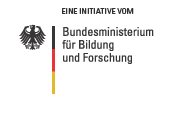Ingo Grunwald: Mussel glue and antifreeze lacquer
-
 <ic:message key='Bild vergrößern' />
<ic:message key='Bild vergrößern' />
- The biologist Ingo Grunwald has made his name in the field of bionics. Quelle: Grunwald
22.01.2008 -
Even when on holiday, Ingo Grunwald can’t quite let go of his work. Not long ago, the biologist took some time off from the Fraunhofer Institute for Manufacturing Technology and Applied Materials Research (IFAM) to travel to Denmark with his wife and two young sons, where they stayed in a small cottage on the coast. There, whilst walking along the beach, he found some mussels, put them in a bucket and took them home. The mussels then became the presumably unwilling subjects of a series of small tests. "By the end of the holiday, there wasn’t a single implement or object in the cottage that I hadn’t subjected the mussels to," recalls Grunwald half a year later. The end result: When they made their way out of the shells, the mussels were able to stick firmly to everything they came into contact with. "It’s amazing," says Grunwald, "the mussels were not to be budged, even from a brand new Teflon pan. No known glue can stick to Teflon whilst in saltwater.”
This story neatly highlights two important aspects of Ingo Grunwald’ research life. On the one hand, his considerable motivation, a result of a deep sense of curiosity, as well as a sense of fun for his work. And on the other, the thematic focus of his research: Bionics. This is a branch of science that hopes to exploit and make available for technology the extraordinary achievements and capabilities of the natural world. The mussels, whose adhesive talents Grunwald and his collegues from the IFAM hopes to utilise in medical application, are just one example. Before too long, surgeons could possibly glue together a ruptured spleen with a new kind of bionics glue.
Closing in on a biological antifreeze
Alongside the marine adhesive, the biologist is also focused on the development of a biological antifreeze and its application in paints. Many types of fish and animals in the Arctic and Antarctic regions can survive in temperatures as low as minus 1.8 degrees Celsius. This is the point at which salt water freezes. However, blood will freeze at 0.7 degrees. The ice crystals destroy the cells in the blood, which is fatal. Cold-blooded animals such as fish and insects need to protect themselves against this risk, which they do using a form of antifreeze. The winter flounder fish pulls off this particular trick extremely well: they have high concentrations of a small protein - "anti-freeze protein type 1" - in their blood. This collects on ice crystal seeds, preventing the development of larger crystals. Ultimately, this means that no ice is able to form.
Several companies have approached the Fraunhofer Institute in Bremen hoping to collaborate on the development of surfaces that can resist the build-up of frost. They need surfaces that don’t freeze over. For example, the ice that develops on aircraft wings and on the propellers of large wind turbines can cause huge problems. The biologist Grunwald already had some knowledge of the antifreeze proteins used by the cold-blooded animals, which he used as a starting point for a solution.
His strategy involved collaboration with a number of working groups. Firstly, he asked lacquer technicians how he could install his proteins in a varnish or paint-like liquid. "That's the beauty of the application-oriented Fraunhofer Institute.You wouldn’t find a lacquer technology department in a university that you could approach," says Grunwald. The technician explained to him which reactive compounds can be mixed into the lacquer. Chemists were the next to be approached, giving advice on to modify the antifreeze proteins so that they react properly with the binding compounds in the fluid. After many attempts, Grunwald and his working group succeeded in finding a way to bolster the product with antifreezing properties.
Winner of the BMBF Bionics competition
Grunwald is now testing the technique for its industrial suitability. "Their thinking is on a completely different scale. They want to know how much it costs, how durable it is, and whether the procedure changes the colour of the laqcuer," says the biologist. This research is being funded by the German Federal Ministry of Education and Research (BMBF) after his project was selected as one of the six winners of the BMBF’s "bionics - Innovations from Nature” ideas competition in 2007.
The 39-year-old studied at the University of Hanover. This was followed by research positions in London, Haifa (Israel), Ahrensburg and Stuttgart. "I was an academic nomad. Now, with this position, I’m glad to be doing something a little more settled" says Grunwald. Particularly, his work at the Bremen-based Fraunhofer Institute, where he has worked since 2004, has been greatly enjoyable. And, no doubt, his young sons are also pleased that they won’t be moving house anytime soon.
Author: Ragnar Vogt





